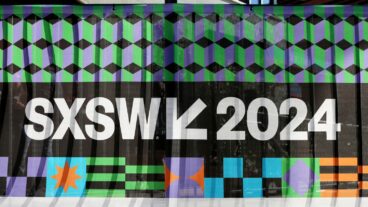The brace-like device with built-in electrodes helps the hand grasp and release objects. Stroke sufferers or victims of a spinal cord injury often lose partial use of their hands. As a result, they can spend agonizing months in rehabilitation, attempting to perform simple tasks like lifting and carrying objects, drawing, writing and personal grooming.
Now a powerful device developed in Israel which can restore the use of a partially paralyzed hand due to neurological damage is available to the millions of American who have suffered a stroke and are going through the rehab process.
The NESS-H200 was developed by an Israeli firm, Neuromuscular Electrical Stimulation Systems Ltd. (NESS), to treat impairment of the hand and shoulder from stroke or spinal cord injury and to relieve complications such as swelling and the painful contraction or atrophy of muscles.
A brace-like device fits snugly over the forearm and hand, with built-in electrodes touching key muscles. It’s connected to a portable unit easily operated by the patient that may be set in different modes, to exercise the hand by shocking the muscles to open and close the fingers and to help the hand grasp and release objects.
“It improves the quality of daily living,” said Roger Nathan, the founder of NESS Ltd. NESS is an acronym for Neuromuscular Electric Stimulation Systems. And in Hebrew, ‘ness’ means miracle, which is the way many people feel about their enhanced manual abilities gained by using the compact device.
An associate professor of biomedical engineering in Ben-Gurion University’s department of mechanical engineering, Nathan’s research in electrical stimulation of the neuromuscular tract led to the development of the device.
“It works through the nerve/muscle junction, the connecting point,” he told ISRAEL21c. “Neuromuscular stimulation enhances physiological and metabolic activity in the peripheral nerves, muscles, connective tissue, and their blood supply.”
“Over half of the people who suffer a stroke have paralysis of the hand,” said Nathan. Eighty percent suffer secondary complications after a stroke, including a pain syndrome in the hand and shoulder, a ‘psychological amputation’ because of learned non-use, spasticity, poor blood circulation, tissue shortening and further degeneration of the limb.
The NESS H200 activates the muscles and reverses these secondary complications preventing long-term disability. “It provides regular exercise, like jogging, that can restore the limb to healthier function,” said Nathan. “Sometimes a person can recover residual movements and gain spontaneous use of the hand.”
The NESS H200 has been successfully marketed as the Handmaster in Israel and Holland for several years. It has been cleared by the FDA for marketing and sales in the U.S.
According to NESS researcher Amit Dar, the device had been tested extensively in Israel and the U.S.
“In Israel it was tested at the Lowenstein Rehabilitation Center and at Tel Hashomer in the Sheba Medical Center. In the U.S, we tested the device at the Kernan Rehabilitation Center in Baltimore,” he told ISRAEL21c.
Approved in 2001 for functional use by the FDA, the NESS-H200 is now available in some U.S. rehab centers, and will become available in even more centers in both the U.S. and Canada over the next year. “It is sold through rehabilitation centers that are trained in using it,” said Dar.
Dr. Gad Alon, a pioneer in stroke therapy and an associate professor at the University of Maryland School of Medicine in Baltimore, was responsible for testing the NESS-H200 at the university’s Kernan center. In one of several papers, Alon and other researchers concluded in 2002 that the NESS H200 “is a safe and effective, noninvasive neuro-prosthesis for improving hand functions and impairments in selected persons with chronic hemiplegia [paralysis] secondary to stroke.”
Last year, in a study that included 77 patients, some of whom had had strokes more than three years earlier, Alon and other researchers reported that “five weeks of daily home training using [the NESS H200] with a task-specific stimulation program is likely to improve hand functions and upper limb impairments” from stroke.
Melville, New York resident Saul Friedman participated in the clinical trials for the NESS-H200, and wrote about the experience for Newsday in Long Island.
“Whether the device, or the exercises or spontaneous recovery was responsible, I cannot say for certain. But after 12 weeks of electrotherapy and exercise, my hand remained open instead of becoming clenched. The blood flow in my arm increased, and serious swelling disappeared. In videotaped tests, I did increasingly well at moving blocks and empty cans from one place to another. Now, with exercise only, the hand function has continued to improve.”
Shmulik Shany, CEO of NESS, notes that $1 million worth of orders have already been closed in North America, adding that the NESS H200 has been recognized in the Netherlands as a standard of care for post-stroke patients, and negotiations are now underway for a similar recognition by North American health-insurance firms.
The company lists Johnson & Johnson and Dow among its shareholders, and NESS recently set up a joint venture with Alfred Mann, the Alfred Mann Foundation and Advanced Bionics Inc., forming a new U.S. company, BIONESS, located in California.












